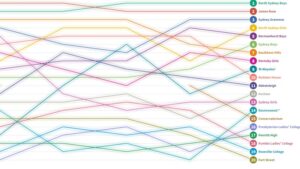
Research led by RMIT University has unveiled a groundbreaking method to transform the high contaminant load of wastewater into a valuable asset for producing green hydrogen. This innovation could significantly reduce the dependence on fresh water, a resource that is becoming increasingly scarce worldwide.
With over 80% of global wastewater being discharged untreated into the environment, this research offers a promising opportunity to convert an environmental liability into enhanced productivity. The team’s approach leverages certain contaminants in wastewater to accelerate hydrogen production, overcoming the challenges posed by high contaminant loads that typically render wastewater unusable.
Revolutionizing Hydrogen Production
The latest work, a collaborative effort involving the University of Melbourne, Australian Synchrotron, and the University of New South Wales, builds upon previous breakthroughs. These include innovations like the rapid removal of microplastics from water using magnets and techniques to boost hydrogen production using seawater.
How the Innovation Works
Associate Professor Nasir Mahmood, the lead researcher from RMIT’s School of Science, explained that the team has discovered a method to capture metals such as platinum, chromium, and nickel from wastewater. These elements are then utilized to enhance green hydrogen production.
“The advantage of our innovation over others to produce green hydrogen is that it harnesses wastewater’s inherent materials rather than requiring purified water or additional steps,” Mahmood said.
The innovation involves electrodes, crucial components for splitting water into hydrogen and oxygen. These electrodes feature an absorbent carbon surface that attracts metals from wastewater, forming stable and efficient catalysts that conduct electricity and expedite the water-splitting process.
Interestingly, the materials used to create the special carbon surface are derived from agricultural waste, adding a cost-effective dimension to the innovation and contributing to a growing circular economy.
Implications for Industry and Government
RMIT is developing a platform of catalytic systems capable of utilizing previously challenging water resources, such as wastewater and seawater. This latest proof-of-concept invention exemplifies the systems under development.
Professor Nicky Eshtiaghi, a co-lead researcher, highlighted the potential of this innovation to reduce the high costs associated with wastewater treatment while transforming it into a valuable source of green hydrogen.
“Our innovation addresses both pollution reduction and water scarcity, benefiting the energy and water sectors,” Eshtiaghi, from RMIT’s School of Engineering, said. “By using wastewater, the process helps reduce pollution and makes use of materials considered to be waste.”
RMIT is eager to collaborate with global companies tackling energy and waste as cost and sustainability challenges, as well as with water authorities. These collaborations could focus on developing commercial systems to deploy this technology on a larger scale.
Next Steps and Future Research
Dr. Muhammad Haris, a co-researcher, emphasized the need for further research to refine the catalyst process, enhancing its efficiency and suitability for commercial applications.
“The method needs to be tested with different types of wastewater to ensure it works universally,” said Haris, from the School of Engineering.
The study, titled ‘Harnessing wastewater as a catalyst modifier for sustainable hydrogen production,’ is published in ACS Electrochemistry (DOI: 10.1021/acselectrochem.5c00064). The journal article will be available at the following link once the embargo lifts: https://doi.org/10.1021/acselectrochem.5c00064.
For visuals of the innovation, images and videos can be downloaded here. Image and video credit: Shu Shu Zheng, RMIT University.
As the world grapples with increasing environmental challenges, innovations like this offer a glimpse into a more sustainable future where waste becomes a resource, and clean energy solutions are within reach.






